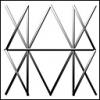first off, yeah, I know "best" is relative, but I'm really stuck now and need to be pointed in some direction and the fact that I'm asking here is because I've failed to find the answer via Google + checking some languages out.
Here's the situation - I'm NOT a programmer. I know HTML+CSS and PHP which I can use to communicate with a MySQL database and make some "interactive" stuff this way, but obviously PHP alone doesn't really allow any truly interactive stuff and require reloading the page for most of the time (at least as far as I know), I really need to finally learn some "real" web programming language which will allow me to do what I'm planning.
To not go into details, but give you an idea what I want to do, I want a website (call it web-app?) with an interface that would NOT require reloading the page each time someone makes an input (click->save->return saved view) and that would allow dragging and dropping stuff around (press->drag->drop->save->return saved view)... oh and it should communicate with a database in the process. Now, I've been avoiding JavaScript for almost 10 years (don't ask) and I'm afraid that it just might be the best solution so could someone please tell me if that's true. Could I achieve what I just described with JavaScript or a combination of JavaScript with PHP or should I go for a different language like... idk... Perl, Python etc.
I really would like to keep avoiding JavaScript as it's sooo.... ugly i.cant.stand(reading)this;
I'd be grateful for any suggestions even if you'd force me to learn JavaScript after all

















 Sign In
Sign In Create Account
Create Account

